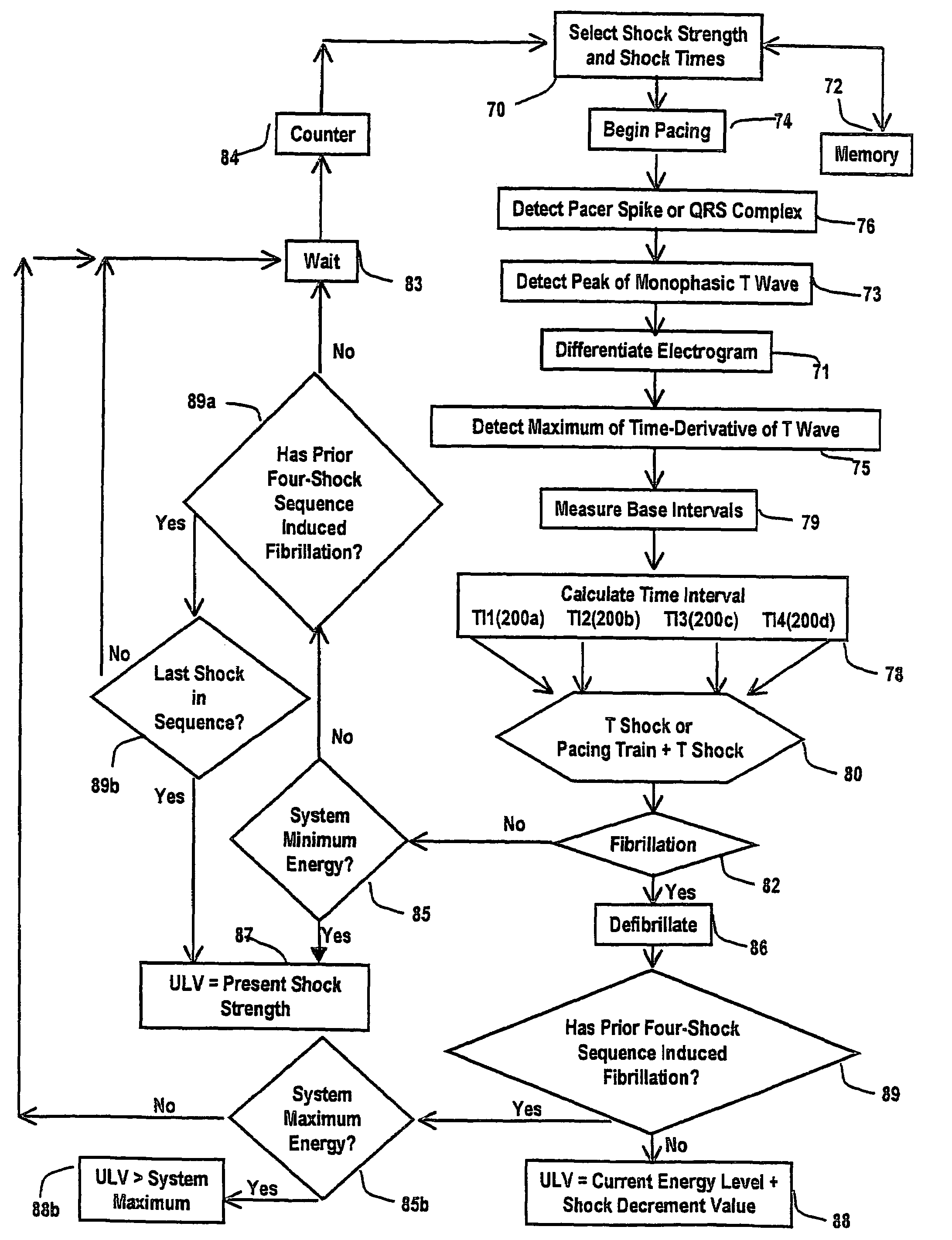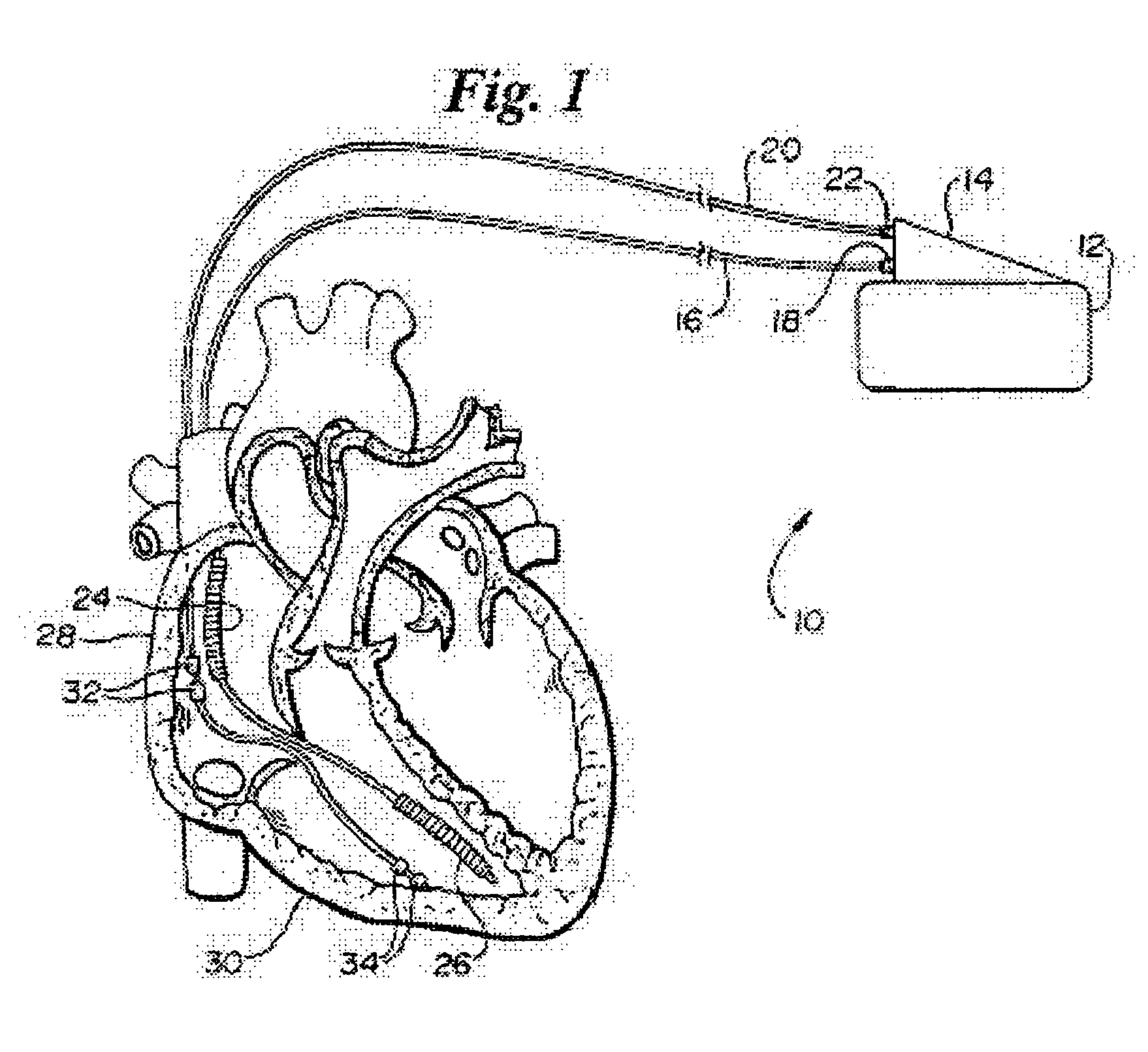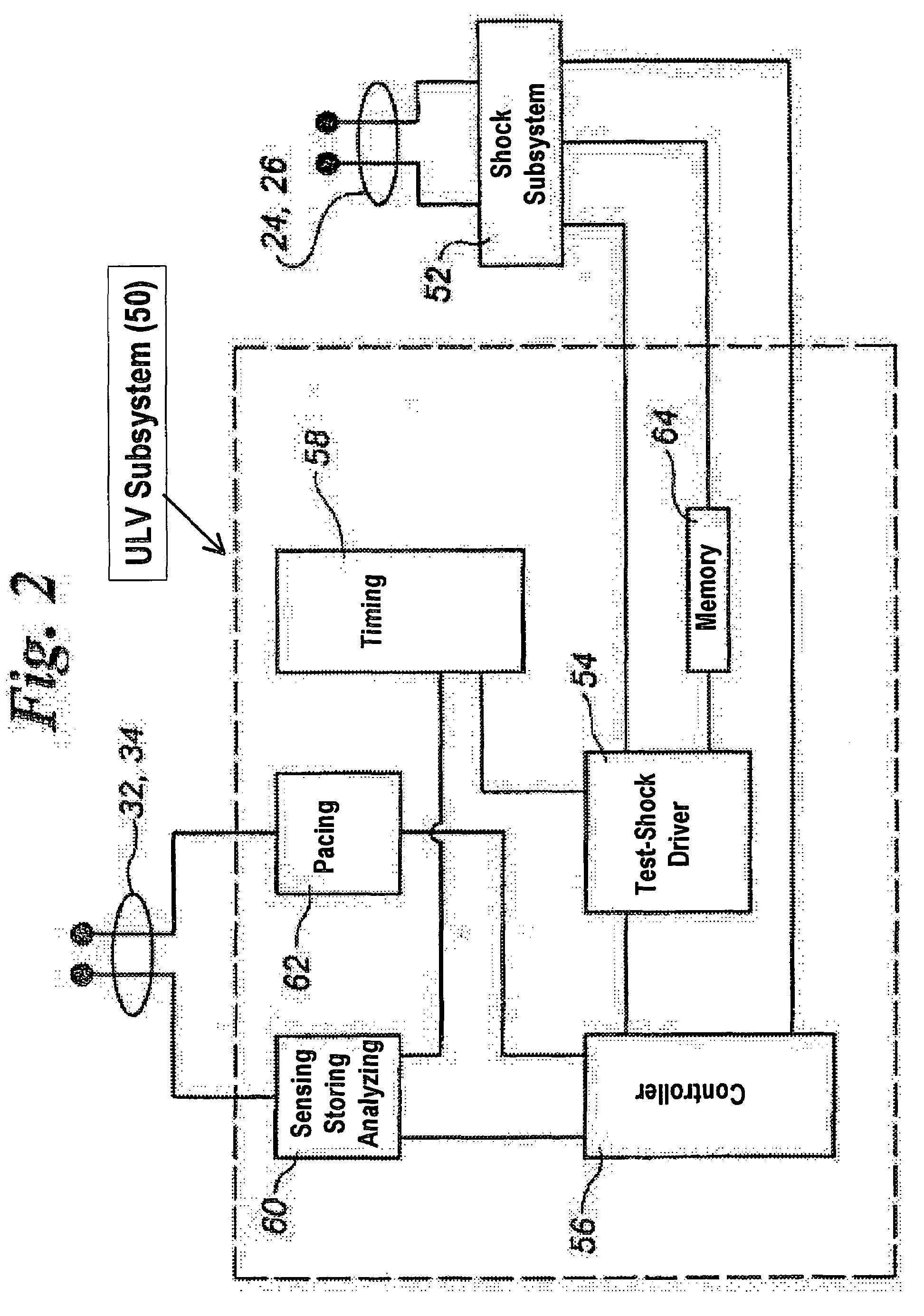Defibrillation shock strength determination technology
a technology of shock strength and defibrillator, which is applied in the field of defibrillator shock strength determination technology, can solve the problems of inefficient use of icd's limited stored electrical energy, inability to store electrical energy in icds, and too fast or too weak contractions of cardiac muscles to pump blood effectively, so as to achieve the effect of detecting local changes or variations
- Summary
- Abstract
- Description
- Claims
- Application Information
AI Technical Summary
Benefits of technology
Problems solved by technology
Method used
Image
Examples
Embodiment Construction
[0096]Referring to FIG. 1, an embodiment of the present invention is depicted as an ICD system 10 comprising an implantable electrical pulse generating housing 12, an electrical connector pin housing 14, an implantable intravascular discharge catheter 16 electrically connected to pin housing 14 via a pin connector 18, and an implantable intravascular pacing / sensing catheter 20 electrically connected to pin housing 14 via a pin connector 22. Discharge catheter 16 carries proximal defibrillation discharge electrode 24 and distal defibrillation discharge electrode 26 and is configured to position proximal electrode 24 within right atrium 28 and position distal electrode 26 within right ventricle 30. Alternatively, these two electrodes may be on different catheters. Pacing / sensing catheter 20, carries two sets of pacing / sensing electrodes, a proximal electrode set 32 positioned within the right atrium 28 and a distal electrode set 34 positioned within the right ventricle 30. Alternative...
PUM
 Login to View More
Login to View More Abstract
Description
Claims
Application Information
 Login to View More
Login to View More - R&D
- Intellectual Property
- Life Sciences
- Materials
- Tech Scout
- Unparalleled Data Quality
- Higher Quality Content
- 60% Fewer Hallucinations
Browse by: Latest US Patents, China's latest patents, Technical Efficacy Thesaurus, Application Domain, Technology Topic, Popular Technical Reports.
© 2025 PatSnap. All rights reserved.Legal|Privacy policy|Modern Slavery Act Transparency Statement|Sitemap|About US| Contact US: help@patsnap.com



